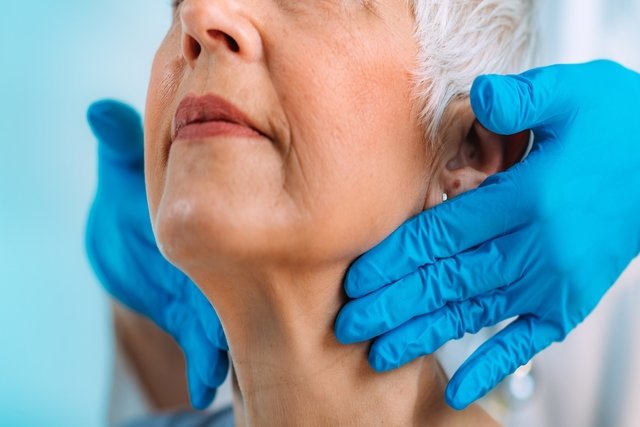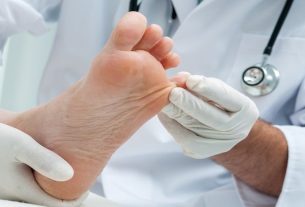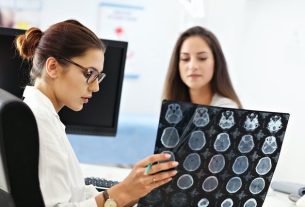Radioactive iodine is an iodine-based medicine that emits radiation, mainly used for the treatment called Iodine Therapy, indicated in certain cases of hyperthyroidism or thyroid cancer. In smaller doses, it can also be used to evaluate thyroid function in the scintigraphy exam.
Iodine 131 is the most used in treatment, however, iodine 123 is the best option for carrying out the test, as it has shorter effects and duration on the body. To carry out this type of procedure on the thyroid, special preparation is necessary, which consists of avoiding foods and medications that contain iodine for approximately 2 weeks beforehand. See how to follow the iodine-free diet.
Furthermore, some care is necessary after using radioactive iodine, such as remaining isolated in a room for about 3 days, and avoiding contact with other people, especially children and pregnant women, until the drug levels decrease and there is no risk of contaminating other people with its effects.

What is it for
The use of radioactive iodine in medicine has 3 main indications:
1. Treating hyperthyroidism
Radioactive iodine can be used to treat hyperthyroidism, especially in Graves’ disease, and is usually indicated when the patient does not improve with the use of medicines, when they cannot use them due to allergies, when they have serious adverse reactions to medication or when more definitive treatment of the disease is necessary, such as people who have heart disease, for example.
How it works: treatment with radioactive iodine works by causing intense inflammation in the thyroid cells, followed by fibrosis of its tissues, which is responsible for reducing the excess hormones produced.
After treatment, the person will continue evaluations with the endocrinologist, who will monitor the functioning of the thyroid, whether the treatment was effective or whether there is a need to use medication. Find out more about the main ways to treat hyperthyroidism.
2. Treating thyroid cancer
Radioactive iodine treatment for thyroid cancer is indicated as a way to eliminate remnants of cancer cells after removal of the thyroid, reducing the risk of cancer recurrence. In some cases, it can also be used to help eliminate metastases and the symptoms they produce.
How it works: radioactive iodine has an affinity for the thyroid, which is why it helps to find and eliminate cancer cells originating from this gland, and the dose used is variable, calculated by the oncologist to be able to destroy these cells.
Learn more about the symptoms that may indicate thyroid cancer, how to diagnose and treat it.
3. Thyroid scintigraphy
Scintigraphy is an exam recommended by doctors to study the functioning of the thyroid, to investigate diseases that may arise in this organ, especially when there is a suspicion of cancerous nodules or those that are producing excess thyroid hormones.
How it works: to carry out the exam, the person is asked to ingest a quantity of radioactive iodine (iodine 123 or iodine 131) through a straw, then images are generated for the device in 2 stages, one after 2 hours and the other after 24 hours . As the dose of radioactive iodine is low, the person can go out and carry out their activities normally during this period.
Pregnant or breastfeeding women should not take this exam. Find out more about when thyroid scintigraphy is indicated and how it is done.
Necessary care before iodine therapy
To carry out treatment with radioactive iodine, some precautions are necessary before the procedure, which include:
- Do not use medicines with iodine or thyroid hormones in the days before the exam, as recommended by the doctor;
- Avoid chemicals that contain iodinein the month before the exam, such as hair dye, nail polish, tanning oil or iodinated alcohol, for example;
- Carry out the test while fasting of at least 4 hours.
- Follow an iodine-free dietnot consuming foods containing iodine in the 2 weeks prior to treatment or examination, which includes saltwater fish, seafood, seaweed, whiskey, processed breads, chocolates, canned, spicy products or products containing sardines, tuna or soy and derivatives, such as shoyu, tofu and soy milk.
See more details on what the iodine therapy diet should be like:
Care after iodine therapy
After taking the radioactive iodine tablet, the person has high doses of radioactivity in the body, which passes through the skin, urine and feces, so some care is needed to avoid passing the radiation to others:
- Stay in an isolated room for about 8 days of using radioactive iodine, as advised by the doctor. Generally, you can stay in the hospital for 2 to 3 days and on the other days you can be at home, but without contact with others, especially pregnant women and pets;
- Drink plenty of water to produce more urine, which helps eliminate radioactivity from the body;
- Consume citrus productssuch as lemon water or candy, to stimulate the salivary glands to produce more saliva and combat dry mouth, and prevent medication build-up.
- Always stay at least 1 meter away of any person, not being allowed to have sexual relations, nor sleep in the same bed, during the period recommended by the doctor;
- Wash all clothes separately used during that week, as well as sheets and towels;
- After urinating or evacuating, always flush the toilet 3 times in a row, in addition to not sharing the bathroom with anyone else in the house.
Dishes and cutlery do not need to be washed separately, and there is no need for special food after taking radioactive iodine.
Possible side effects
Some of the side effects that radioactive iodine treatment can cause include nausea, abdominal pain and swelling and pain in the salivary glands.
In the long term, the effect of radioactive iodine can cause hypothyroidism, making it necessary to use medication to replace the lack of thyroid hormones. Furthermore, the action of radioactive iodine can also harm the functioning of other glands in the body, such as salivary and ocular glands, causing dry mouth or dry eyes, for example.

Sign up for our newsletter and stay up to date with exclusive news
that can transform your routine!
Warning: Undefined array key "title" in /home/storelat/public_html/wp-content/plugins/link-whisper-premium/templates/frontend/related-posts.php on line 12
Warning: Undefined array key "title_tag" in /home/storelat/public_html/wp-content/plugins/link-whisper-premium/templates/frontend/related-posts.php on line 13



